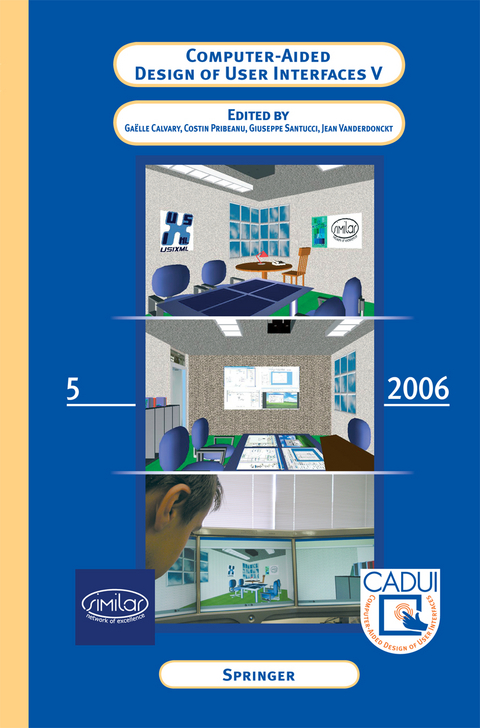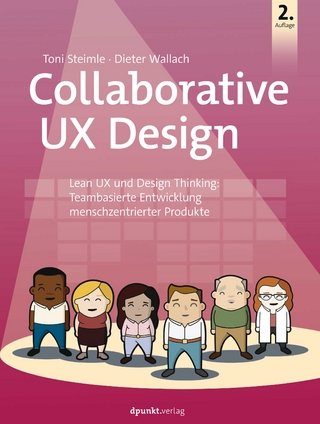
Computer-Aided Design of User Interfaces V
Springer (Verlag)
978-94-017-8487-0 (ISBN)
Generating User Interfaces from Conceptual Models: A Model-Transformation Based Approach.- Towards Object Oriented, Uiml-Based Interface Descriptions for Mobile Devices.- Towards A System of Patterns for the Design of Multimodal Interfaces.- Design Options for Multimodal Web Applications.- A Generic Approach for Pen-Based User Interface Development.- Participatory Design Meets Mixed Reality Design Models.- A Method for Developing 3D User Interfaces of Information Systems.- GestAction3D: A Platform for Studying Displacements and Deformations of 3D Objects Using Hands.- Designing and Developing Multi-User, Multi-Device Web Interfaces.- A System to Support Publishing, Editing, and Creating Web Content for Various Devices.- Transformational Consistency.- Rapid Prototyping of Distributed User Interfaces.- The Comets Inspector.- A Generic Approach for Multi-Device User Interface Rendering with UIML.- Device Independent Layout and Style Editing Using Multi-Level Style Sheets.- Automatic Interface Generation Through Interaction, Users, and Devices Modeling.- The Meta Sketch Editor.- A Hybrid Tool for User Interface Modeling and Prototyping.- Towards A Support of User Interface Design By Composition Rules.- IdealXML: An Interaction Design Tool.- Integrating Model-Based and Task-Based Approaches to User Interface Generation.- Automated Repair Tool for Usability and Accessibility of Web Sites.- Automating Guidelines Inspection.- Remote Web Usability Evaluation Exploiting Multimodal Information on User Behavior.
| Erscheint lt. Verlag | 3.12.2014 |
|---|---|
| Zusatzinfo | XIV, 298 p. |
| Verlagsort | Dordrecht |
| Sprache | englisch |
| Maße | 155 x 235 mm |
| Themenwelt | Mathematik / Informatik ► Informatik ► Betriebssysteme / Server |
| Mathematik / Informatik ► Informatik ► Datenbanken | |
| Mathematik / Informatik ► Informatik ► Grafik / Design | |
| Informatik ► Software Entwicklung ► User Interfaces (HCI) | |
| Informatik ► Weitere Themen ► CAD-Programme | |
| ISBN-10 | 94-017-8487-6 / 9401784876 |
| ISBN-13 | 978-94-017-8487-0 / 9789401784870 |
| Zustand | Neuware |
| Haben Sie eine Frage zum Produkt? |
aus dem Bereich


